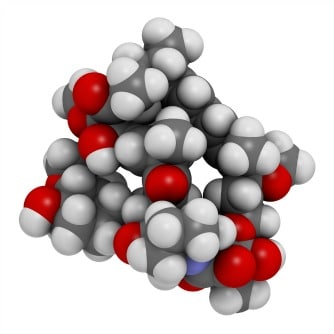The medical community has found that rapamycin inhibits the aging process. As a result, age-related diseases are delayed. The result is an extension of lifespan and an improvement in well-being. Rapalogs like rapamycin and everolimus prevent geroconversion to senescence.
It has recently been discovered that pan-mTOR inhibitors, referred to as dual mTORC1/C2 inhibitors, subdue senescent phenotype. In fact, pan-mTOR inhibitors proved superior to rapamycin in the suppression of hypertrophy, Oil Red O staining, senescent morphology and even in the quest to boost chronological life span.
About Rapamycin
Rapamycin is known to delay the aging process in yeast, mice, worms and Drosophila. It even slows the progression of age-related diseases in an array of species. An abundance of studies have shown that rapamycin extends life to varied lengths. This extension is determined by the potency of the dose. Especially strong doses serve to inhibit mTOR at a heightened level.
The Magic of Pan-mTor Inhibitors
Medical professionals suggest that pan-mTOR inhibitors can serve as anti-aging drugs at doses less than those required by anti-cancer concentrations. A group of pan-mTOR inhibitors was recently studied to determine the best possible gerosuprressive concentrations. It was found that certain agents decreased hypertrophy associated with senescence. Specifically, pan-mTOR inhibitors linked to the ps6k/ps6 axis served to preserve RPP.
Why Pan-mTOR Inhibitor are Favored Over Rapamycin
Optimal concentrations allow pan-mTOR inhibitors to lengthen the loss of re-proliferative potential within cell culture in a manner more potent than rapamycin. Tests have shown that hyper-metabolism and the production of lactic acid represent equivalent “yeast CLS”. It is concluded that pan-mTOR inhibitors are more effective for anti-aging purposes than rapamycin.
At especially low concentrations, pan-mTOR inhibitors function in a manner similar to rapamycin. These concentrations inhibit the S6/S6K axis and result in a shifting of 4EBP1. The effects of pan-mTOR inhibitors differed from rapamycin to a considerable extent. PP242 and Torin 1 were similar to rapamycin. There was a much more narrow window between the inhibition of pS6K/S6 versus AKT and p4EBP1 for AZD8085 and Torin 2 than for 4 pan-mTOR inhibitors.
What it all Means
It is clear that pan-mTOR inhibitors lengthen lifespan past the limits possible by rapamycin. Pan-mTOR inhibitors are currently being tested in clinical trials for cancer treatment. Pan-mTOR inhibitors might soon be used for the prevention of diseases related to the aging process and even for a mitigation of the aging process itself.




